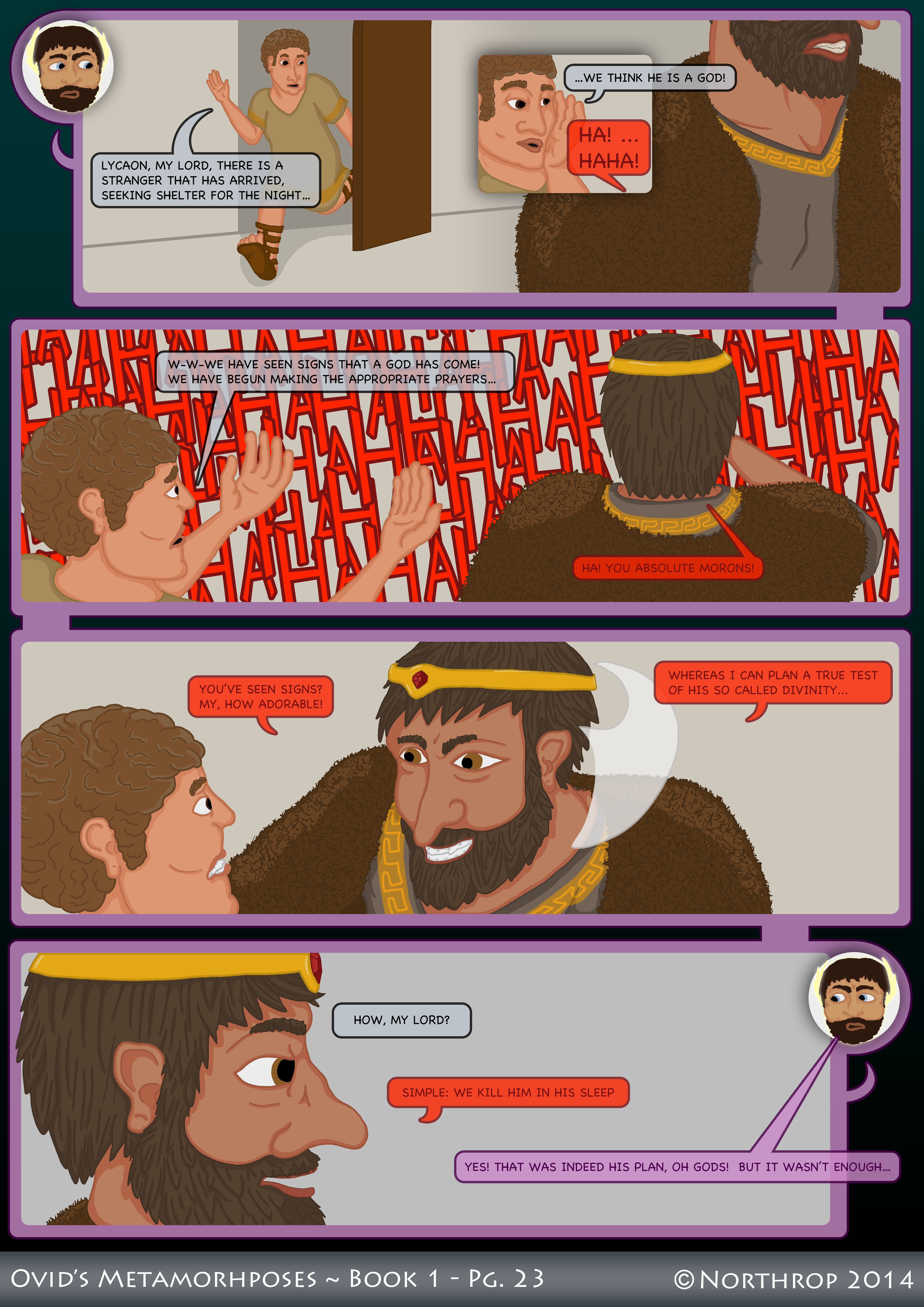“SIGNA DEDI VENISSE DEUM, VULGUSQUE PRECARI
COEPERAT; INRIDET PRIMO PIA VOTA LYCAON,
MOX AIT ‘EXPERIAR DEUS HIC DISCRIMINE APERTO
AN SIT MORTALIS, NEC ERIT DUBITABILE VERUM.’
NOCTE GRAVEM SOMNO NECOPINA PERDERE MORTE
ME PARAT – HAEC ILLI PLACET EXPERIENTIA VERI!
NEC CONTENTUS EO EST; […]”
(MET. 1.220-5)
“I GAVE SIGNS THAT A GOD HAD COME, AND THE RABBLE BEGAN TO PRAY;
AT FIRST, LYCAON LAUGHED AT THEIR PIOUS PRAYERS,
AND SOON HE SAID, “I SHALL CLEARLY DETERMINE WHETHER THIS ONE IS A GOD
OR A MORTAL, NOR WILL THE TRUTH BE DOUBTABLE.’
HE MADE READY TO OFF ME WITH AN UNEXPECTED DEATH AT NIGHT WHILE I SLEPT –
THIS WAS THE TEST THAT TRULY PLEASED HIM!
NOR WAS HE CONTENT WITH THAT, […]”
Sorry for the late update, everyone. We’re nearing the end of term, the time when the work increases and the health goes haywire. Since I work on the comic in the evenings after I get back from the library, I had to sacrifice some working time to get proper sleep since falling ill. I’m feeling better now, though, and today’s page is a testament to the renewed efforts I am putting into this project.
Since this is part of an ongoing story, my commentary will actually be pretty scant and even cryptic, so as to not spoil the plot for those who are reading for the first time. I can say, however, that this is the poem’s first instance of dialogue in an embedded narrative.* I wrote last week about how much of a rabbit warren the embedded narratives can be in the Metamorphoses. I’ve decided to ease the task of reading by colour-coding the characters’ speech. Ovid is black and white, Jupiter is done in shades of purple, Lycaon in shades of dark red, and characters whose dialogue I completely invent are black and blue-grey. This list will grow as the comic progresses, obviously. It also helps with the characters who tell stories, because the panels with their stories in can be bordered in their individual colour scheme.
The servant’s colours should indicate that I invented his dialogue entirely. In fact, Ovid does not mention such a character at all in this scene. It is part of the constraints of comics, however, that what the book can leave to the reader’s imagination, I have to fill in explicitly. Characters like servants and slaves are generally erased in Classical poetry, though, so inserting them is not hugely controversial. They’re just generally assumed to be hanging around anyway (what? do you think the kings and gods are just always hanging out in empty rooms all the time?). Also, his telling about the “signs” means I don’t have to draw them, and like Ovid, can leave them to the reader to imagine.
That is all for now! I must away to more duties; see you all Monday for the next thrilling installment!**
* Remember: “embedded narrative” is a “story-within-a-story”
** Assuming I finish it on time…

Discussion ¬